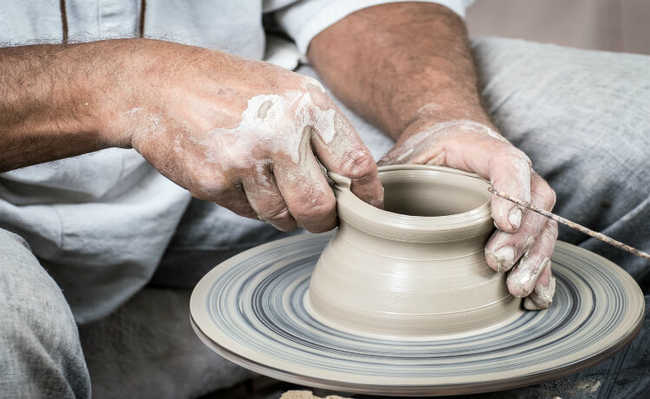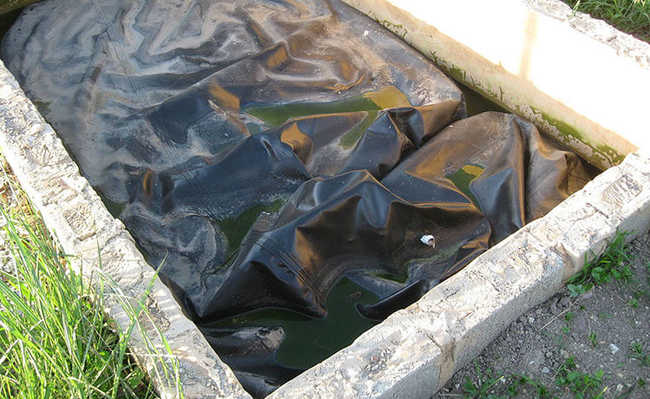How to make sustainable homemade soap
eCycle team took the test and presents you with the best homemade soap recipe

Knowing how to make homemade soap with used oil is a great way to save money and also reduce waste generation. The homemade soap recipe described below is of high quality and created from a more environmentally friendly formula, as it reuses used cooking oil, being a great way to practice conscious consumption and Circular Economy (since you don't loses the resources spent on oil production and still generates a new product). You may already know that used cooking oil cannot be poured into the sink (as it causes clogging) or improperly disposed of. Chances are, they've already told you a story about the possibility of making homemade soap with used cooking oil, but have you tried the experiment?
There are numerous recipes for homemade soap with cooking oil around the internet, but studies have shown that most use caustic soda in excess and this is extremely dangerous for some reasons:
- The substance is harmful to health because of its corrosive and dehydrating properties, being very aggressive to the skin, which becomes dry, may present cracks and even hypersensitivity and inflammation;
- It also harms the environment, as it greatly increases the pH of domestic sewage which, depending on its destination, will unbalance the pH of rivers and lakes, interfering with the entire ecosystem;
- Excess soda can destroy fabrics and clothes during washing, shortening their shelf life;
But if soda is so harmful, why do we use it to make homemade soap?
The harmful nature of caustic soda is in contact with the skin and eyes, and in its direct use or disposal in the environment or sewage. However, when using it to make homemade soap, its reaction with cooking oil will transform these two ingredients into other products, which are the homemade soap itself and glycerin. If you are careful to use the required amounts described in the recipe below, there will be no excess of any ingredients in the final product.
In this way, your homemade soap will produce the least possible environmental impact, because although the soap is biodegradable, that is, it is decomposed by microorganisms present in nature, it does not mean that it does not have an environmental impact, and what we are looking for here is to have a lighter footprint, with as little impact on the environment as possible, as we need soap for our daily cleaning needs.
the team of eCycle portal researched and tested some homemade soap recipes, taking great care to arrive at a final formula that contained only the strictly necessary amounts of each component. Thus, it would be possible to achieve a final product with good quality and with a pH as close as possible to neutrality. The National Health Surveillance Agency (Anvisa) determines that the maximum pH of soaps should be up to 11.5, but many of the studied recipes had a pH much higher than that.
The formula presented below (and in the video above) was the one with the best result. It is extremely important to use the proportions described below. Check out the exclusive video from the eCycle Portal channel on YouTube to view the complete procedure.
How to make homemade soap
Ingredients
- 1 kilo of used cooking oil;
- 140 milliliters of water;
- 135 grams of flaked caustic soda (concentration greater than 95%);
- 25 milliliters of alcohol (optional).
Extras to supercharge your homemade soap (optional)
- 30 grams of flavorings;
- 10 grams of rosemary powder (natural preservative).
Materials
- Containers for the mold of homemade soap (specific shapes, plastic trays or long-life packaging - never use aluminum containers);
- 1 wooden spoon;
- 1 pair of dishwasher gloves;
- 1 disposable mask;
- Protective goggles;
- 1 large bucket;
- 1 small container.
Method of preparation
First, put on goggles, gloves and mask . Caustic soda is highly corrosive and must be handled with great care. Let's go step by step on how to make homemade soap:
1. Put the water to heat until it is warm (around 40°C). Once this is done, put the water in the small container and insert the caustic soda slowly and in small portions in the same container, always mixing with each addition. Never add cold water to soda! The order of ingredients must also be respected: put soda over water, never water over soda (this can cause a strong reaction and cause accidents). It is very important to use a plastic bucket or container made of thick and resistant material, and never use PET bottles to dilute the soda, as they cannot withstand the temperature reached by the reaction, which can break and leak this extremely corrosive material.
Stir with a wooden spoon until the soda is completely diluted so that there are no more scales. Attention: do not use disposable aluminum containers together with caustic soda and make sure they are high enough, as this dissolution can effervesce and cause foaming.
2. After removing the impurities from the oil (it is possible to do this with a sieve), heat it a little (to a temperature of 40°C) and add it to the bucket that will be used to place all the other ingredients. Then add the soda very slowly, in small portions and mixing continuously. This precaution increases your safety, as the reaction with the caustic soda releases a lot of heat, in addition to producing a good quality soap - if you add the soda all at once or very quickly without proper agitation, the soap may lump and will stay hard to reverse that.


3. Mix only the oil and soda for about 20 minutes. The ideal final consistency should be similar to condensed milk. It is necessary to respect this mixing time so that there is a reaction between the oil and the soda.

4. After this mixing time, the ideal time to add the remaining ingredients begins. Add flavoring and preservative (if you want). Mix well until these ingredients are fully incorporated into the mixture.

5. If the final soap mass is too runny, slowly add the alcohol and mix well for ten minutes so that the mixture does not lump. At this stage, the homemade soap mass will quickly gain consistency. It is recommended that the form in which the soap will be placed is already prepared and close.

The slop of your homemade soap will look like this:

Now just pour the soap into the container you separated...

...and wait for the homemade soap to cure (which takes 20 to 45 days). After disinforming and cutting, it will look like this:

Ready! After waiting for the course time, just uninform and cut and you will have an excellent homemade bar soap to use in your daily life. It is also recommended to leave it in the curing process (20 to 45 days), preferably in an opaque container, kept in a cool place and protected from the sun. This process aims to ensure the complete reaction of the caustic soda, in addition to allow the soap to lose excess moisture. This time may vary according to local weather conditions. Example: if the weather is more rainy, it may take more days; the opposite occurs if the weather is drier.
Once the curing process is finished, it is possible to measure the pH of the soap. Use litmus paper, or make a homemade pH meter yourself.
Understand the ingredients of this homemade soap recipe
Caustic soda
In the manufacture of soap, there is a concern about caustic soda, as it is very corrosive and it is feared that it may be harmful to health and the environment. Its use really requires a lot of attention and some care, since its contact with the skin and mucous membranes (inhalation) can cause burns. If an accident occurs, it is important to wash the area with cold running water for 15 minutes.
After the saponification reaction with the oils, during the so-called curing time, the soda loses its alkalinity, that is, its pH goes down, as the alkalis react with the oils and become homemade soap (understand more about soap in bar). Therefore, it is necessary to be careful and use exactly the recommended amounts of soda so that the substance does not remain in the mixture and lack of oil for it to react, leaving your final product excessively alkaline. This can make it more aggressive to your hands, in addition to modifying the pH of the sewage, which can be harmful to the environment, as mentioned above.
In many accounts of homemade soap recipes that use excess soda, it is noticed that, as the days go by, the homemade soap becomes whiter. This is due to the accumulation of unreacted soda which, when reacting with air, forms sodium carbonate, which is white, and can cause dehydration and allergic reactions on contact with the skin. Therefore, many people complain about homemade soap, saying that it is aggressive to the skin. But, as seen, the problem is not the soap, but the amount of soda used.
A gradual lightening of the homemade soap mass during the curing process is normal, but its final color will not be white. And remember: this soap recipe is not to be used for cosmetic purposes. For general cleaning, the use of gloves is recommended due to their intrinsic alkalinity.
Alcohol
Its addition occurs because the oil solubilization is better in alcohol than in water and thus the hardening of the homemade soap becomes faster. This ingredient may be unnecessary if you notice that, after 20 minutes of stirring, the soap mass already has an adequate consistency to be placed in the mold.
Preservatives
There are two problems to consider in oil and grease spoilage: rancidity and contamination by bacteria and other microorganisms.
Oils, in general, suffer from a problem called rancidification, which is the deterioration of the fat, evidenced by its characteristic smell of spoiled oil/fat. This problem increases with storage time, the presence of light and its contact with air, more specifically with oxygen, which causes the auto-oxidation of fats, responsible for these defects.
To minimize this problem you can:
- Make your homemade soap in small quantities: natural products made at home will not have the same durability as those sold by the industry. Storing it for long periods will increase the chances of problems like the ones mentioned above occurring;
- Store your soap in vacuum containers or in hermetically sealed jars: this reduces the product's exposure to oxygen;
- Store in dark containers or opaque packaging to keep them away from the harmful effects of sunlight;
- Store in refrigerator, slowing deterioration;
- Add natural preservatives to your soap, such as rosemary powder (if you want, you can mix rosemary powder in the soda dilution water for a preservative effect. But you need to check if the final volume will be 140 ml anyway, since the water evaporates in the preparation).
Dyes and essences
The addition of dyes and essences depends on their use:
1. Dyes
- The addition of colorants is not essential, as it does not bring any benefit to the product's performance. This is an aesthetic issue;
- If you really want to add color to your soap, go for natural dyes;
- Food colorings are not a good option, even natural ones, as they do not have good stability in the soap's alkaline environment and, therefore, the final color will not be the same as the desired one;
- Clays are a great option for coloring soaps, providing an opaque and permanent color, with the option of great variety, in addition to being natural. Know where to buy;
- If you are going to use homemade soap to wash clothes, do not add dyes, as they can stain the white items.
2. Flavorings
- Use is opportune to neutralize the smell of used oil;
- Avoid using synthetic essences that contain parabens and phthalates, which are harmful to health and the environment;
- An alternative is the use of phthalate-free fragrances;
- You can also use aromatic essences in the water for diluting the soda, always remembering to respect the indicated amount of 140 ml of water and 135 ml of caustic soda. However, they will not produce an intense aroma, their effect is more to neutralize the characteristic smell of cooking oil. Know how to make your aromatic essence;
- Another option is the addition of fabric softener, but it will make your soap lose sustainability;
- To wash dishes, flavorings are not needed;
- A good option is to use rosemary powder - in addition to flavoring, it has a preservative action on soap.
Note: As with any cleaning product, keep homemade soap out of reach of children.
If you do not want or can make your own homemade soap , look for stations that receive used oil in the recycling stations section of the eCycle portal.
If you prefer liquid soap, find out how to turn your homemade bar soap into the liquid version in the article: "How to make sustainable liquid soap".










